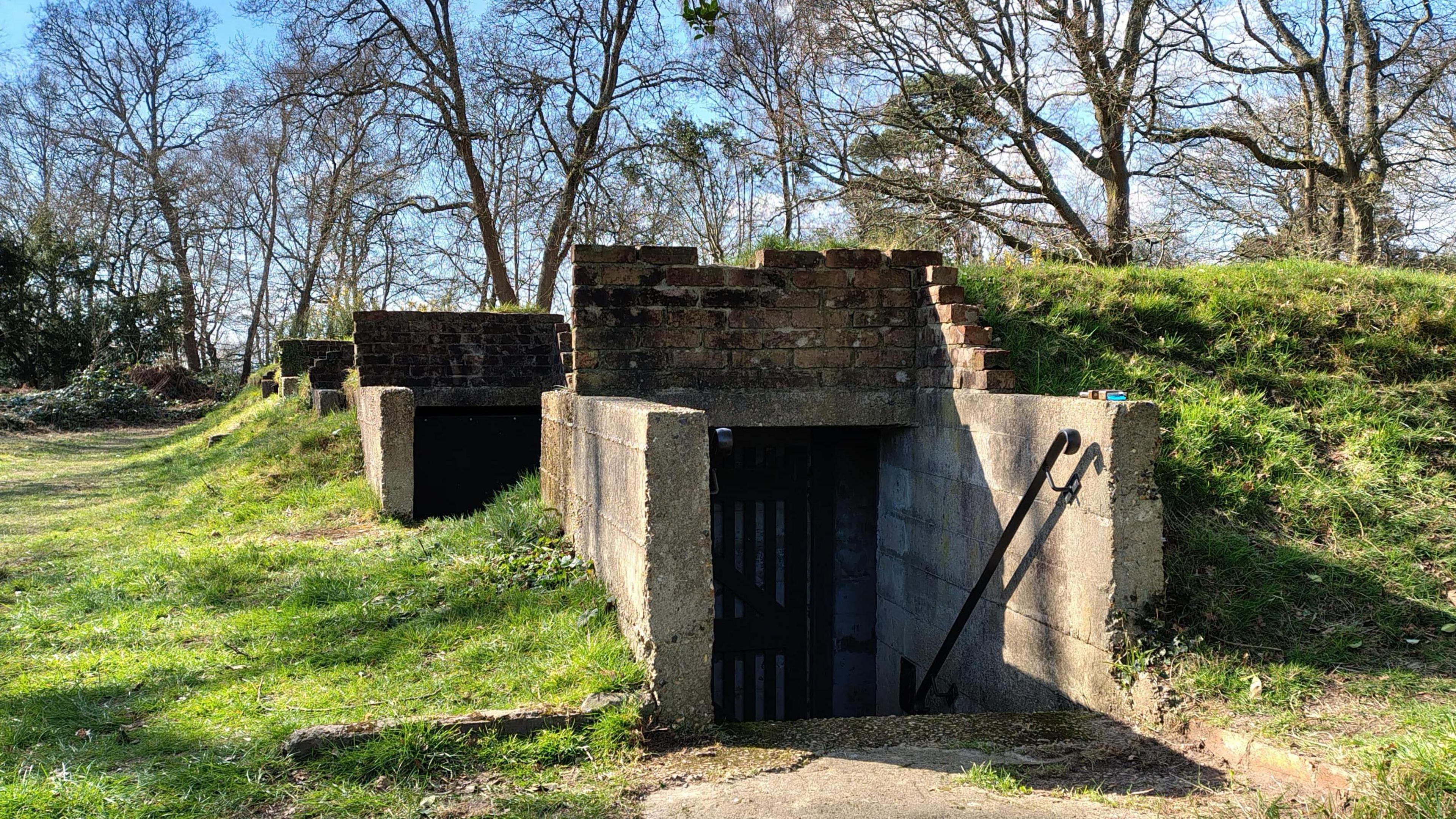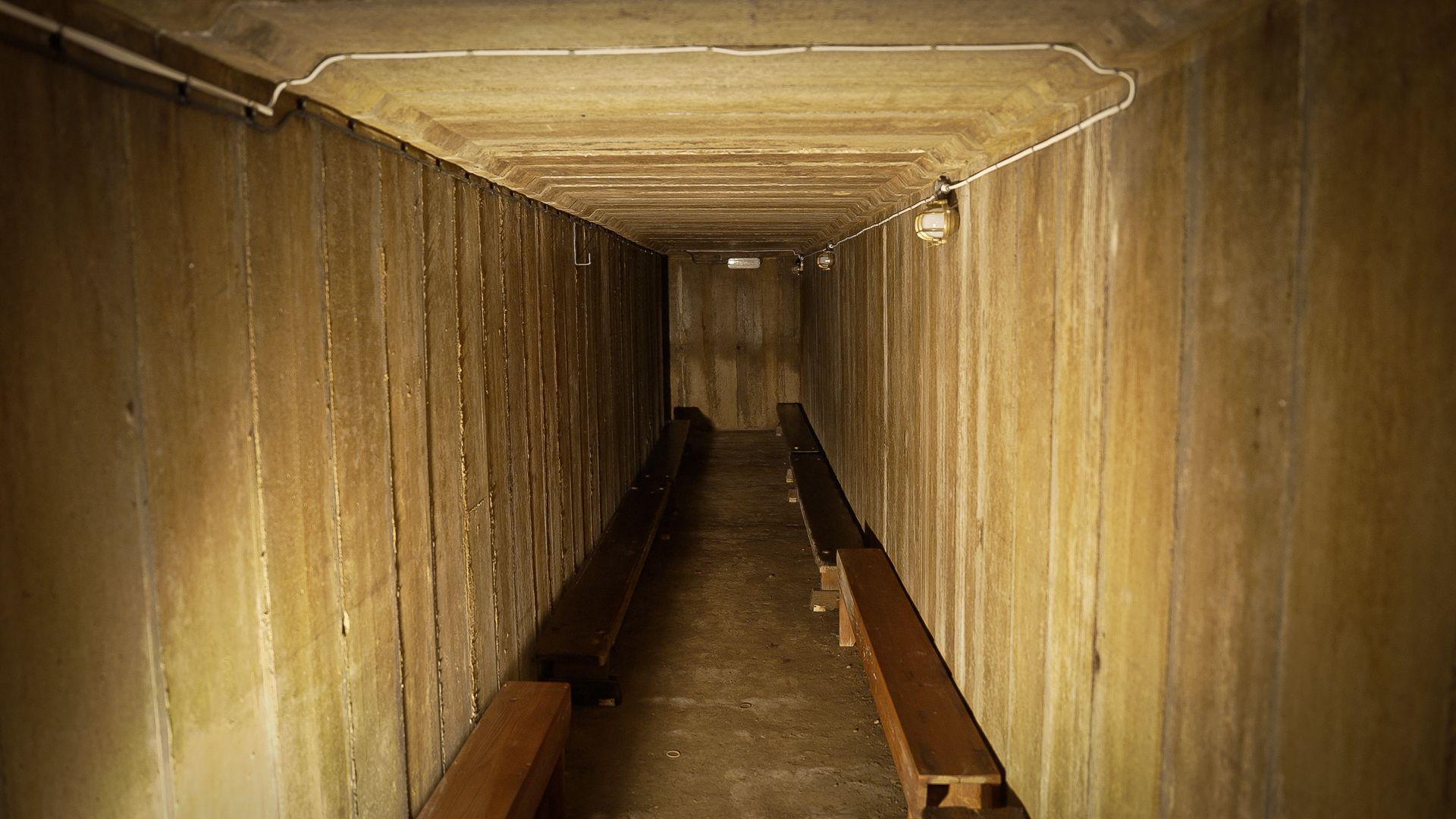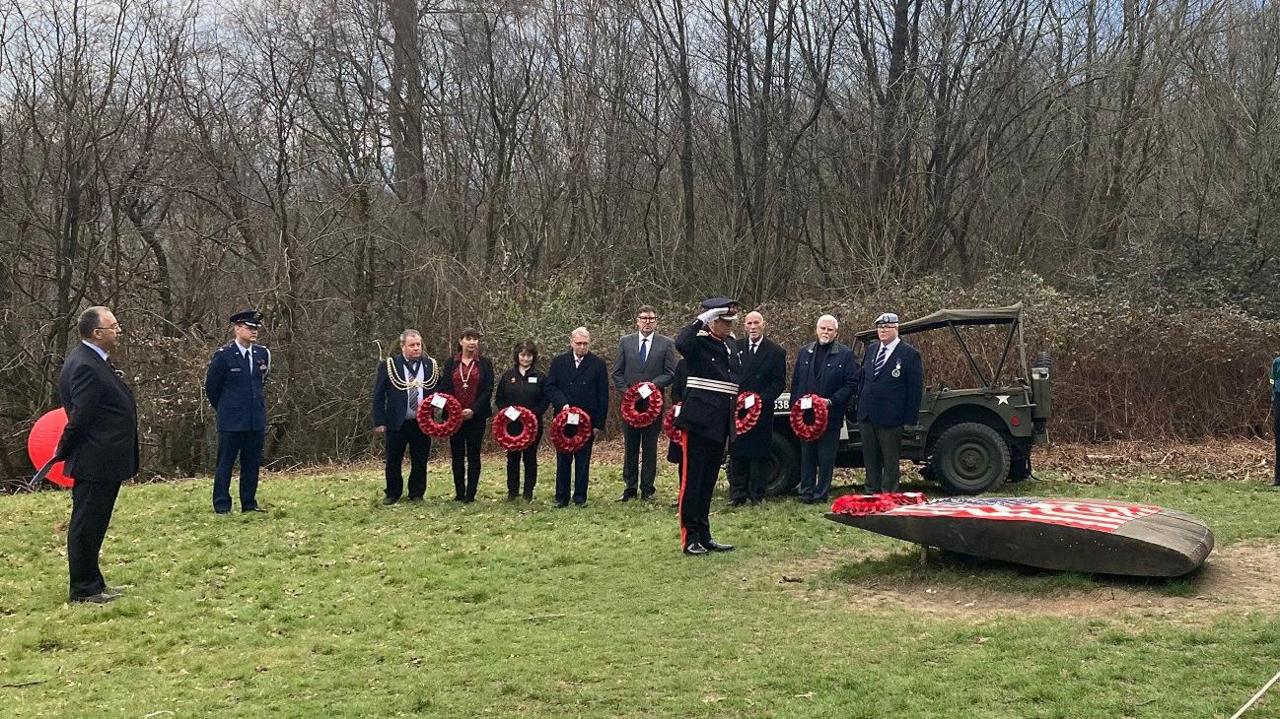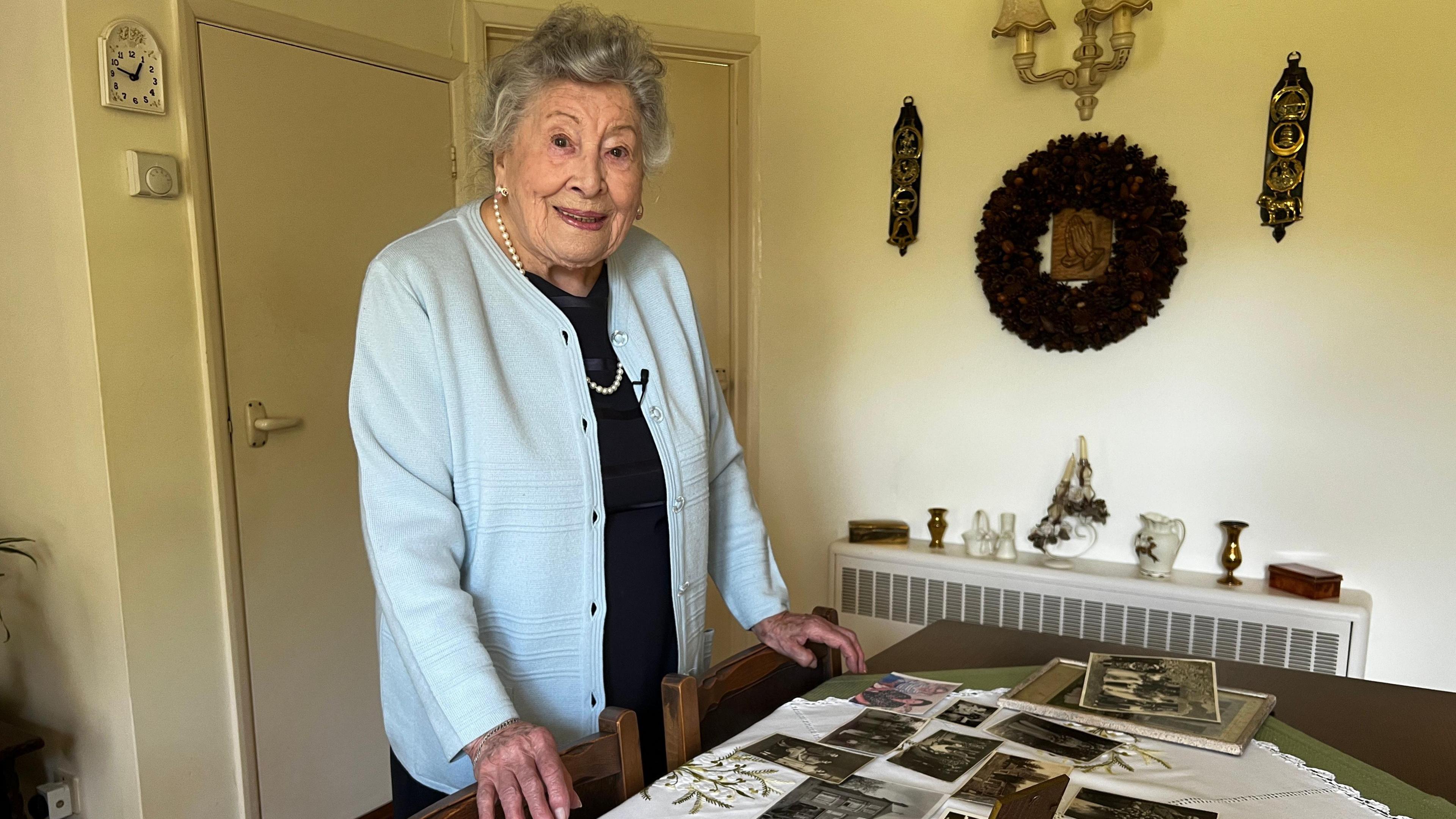How school continued to study as bombs rained down

One of the six shelters is maintained in its original condition
- Published
Air raid shelters used by schoolchildren during World War Two bombing raids remain an important part of an ancient common in Surrey.
Teachers at Limpsfield School led pupils to the nearby bunkers to keep them safe from German bombs - and to continue their studies.
There are six bunkers - one per year group - located at Limpsfield Common, and one was restored to its original condition in 2006.
Rob Davey, from the National Trust, which runs the site, said it was easy to imagine that children were "probably pretty scared" when being moved to the shelter.
The underground shelters can get cold, according to Mr Davey.
"You can imagine what this was like in the middle of winter," he said. "It was dripping because it's concrete and very uncomfortable with no heating at all."
Children faced a choice of where to sit when they arrived at the refuge: near the entrance with their teacher and be labelled a teacher's pet, or at the bottom near the escape hatch and a toilet, hidden behind a curtain.
After that, they got on with their schoolwork.
Waiting beneath Limpsfield Common
Mr Davey said the bunkers were used "fairly regularly" by the school and opened up to nearby residents outside of school hours as a "safe place to go".
A direct hit from a bomb "could be really serious", he said, but otherwise pupils "had a very good chance of being protected".
"It was really important that they got down here," he added.
Two of the six shelters are now used as bat roosts.
The children's journey between the school and the shelters involved navigating barbed wire, installed in open spaces prior to the Blitz to prevent enemy gliders and paratroopers from landing during a possible invasion.
Limpsfield Common is also home to the remains of a Spigot Mortar anti-tank gun.
"At that stage there was a real fear that Britain would be invaded by the Germans," Mr Davey said.
Secret Surrey
Explore more fascinating stories from Surrey
Listen and subscribe for the latest episode of Secret Surrey
Follow BBC Surrey on Facebook, external, on X, external, and on Instagram, external. Send your story ideas to southeasttoday@bbc.co.uk, external or WhatsApp us on 08081 002250.
Related topics
- Published8 May

- Published19 March

- Published8 May
